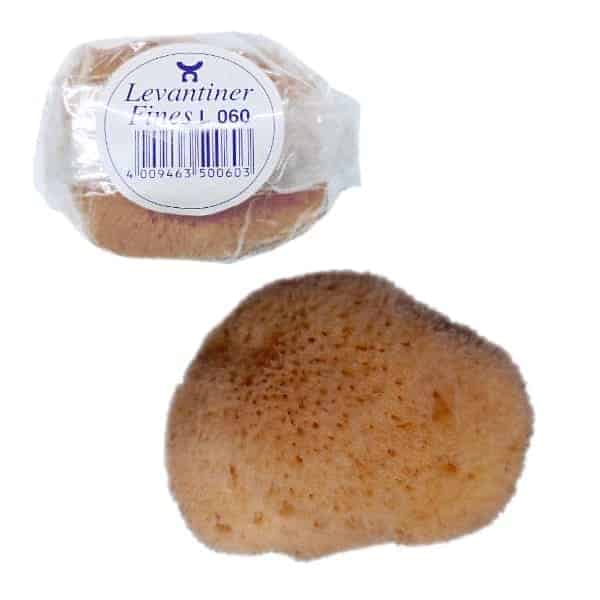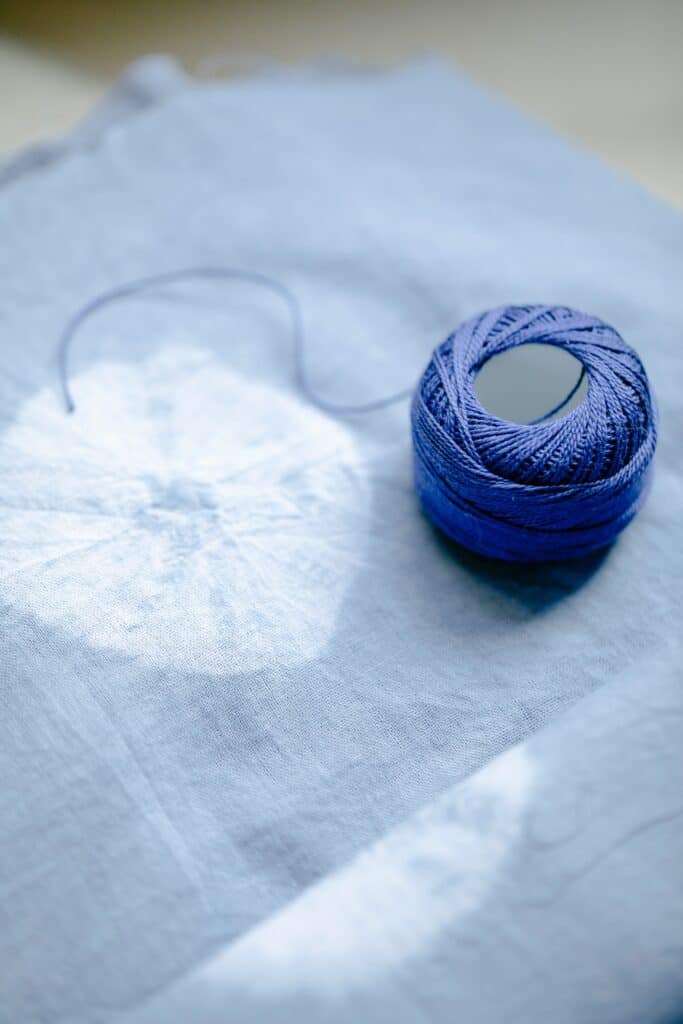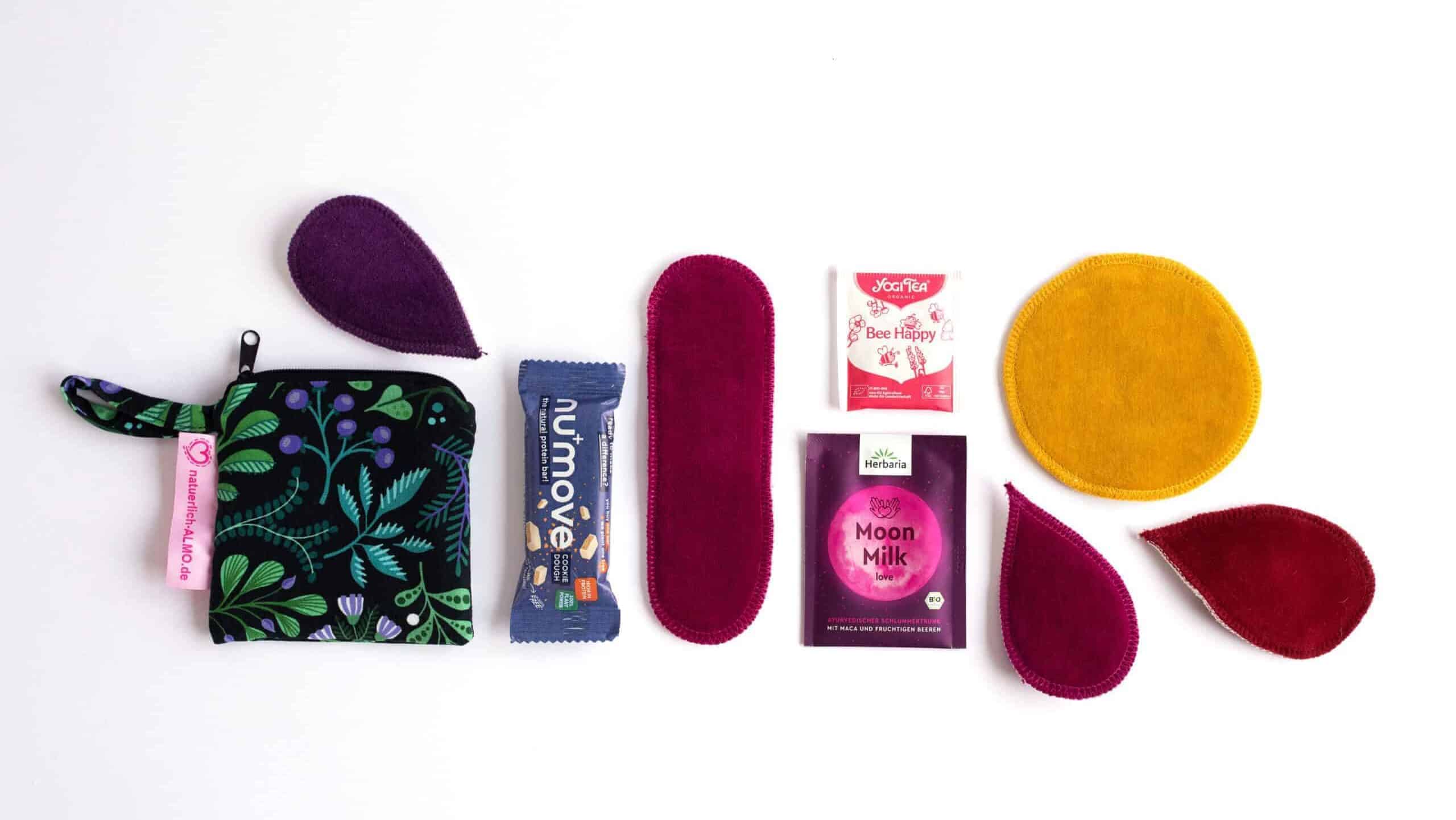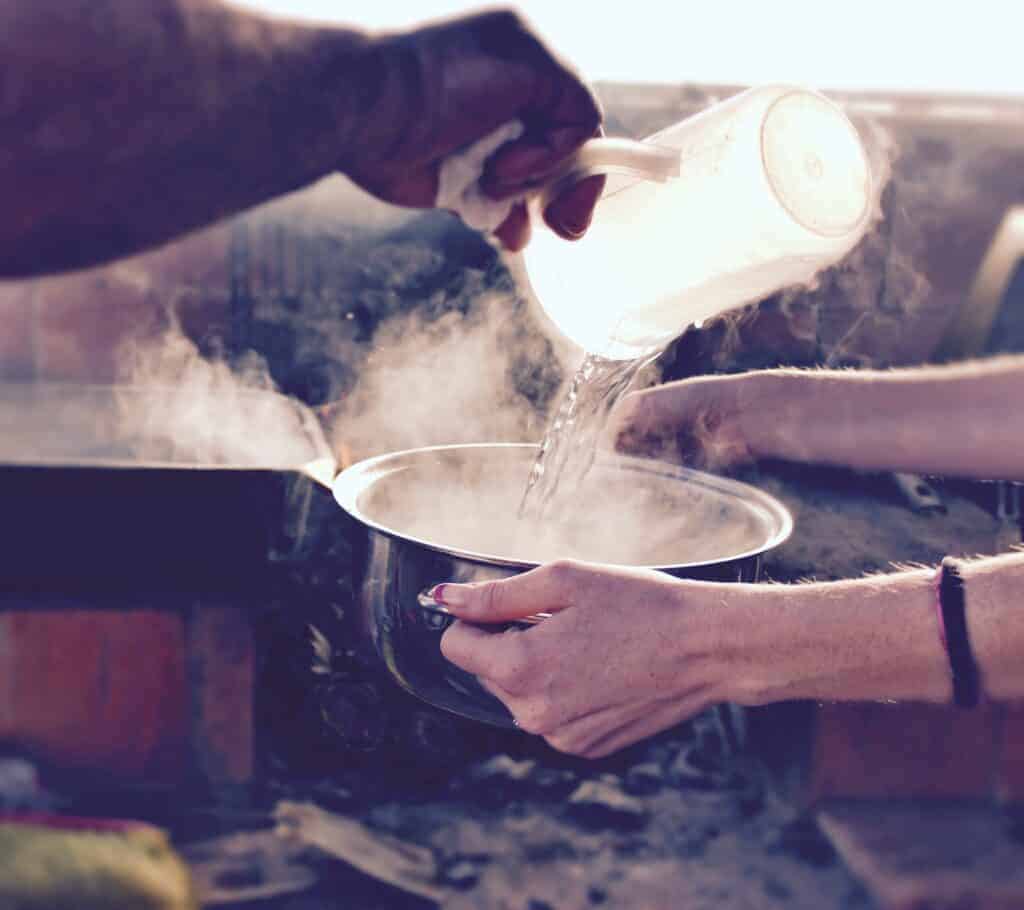Menstrual sponges are a further alternative to classic menstrual hygiene in addition to cloth pads and period panties. You will find out in this article what this is all about - and whether a menstrual sponge is an option for you.


The menstrual sponge serves as a sustainable alternative to the usual hygiene products such as sanitary towels or tampons. It is a natural product that is reusable. It is very absorbent and kind to the skin, so it can be used for menstrual periods without any problems. With the right care and extensive cleaning, users benefit from the numerous advantages that come with it. This includes protecting the environment and your own health, as well as the potential to save monthly costs.
The menstrual sponge is one of the renewable natural products that can be reused. It is completely free of plastic and other chemical-based ingredients that are harmful to the health. It is therefore kind to the skin and soft, and it does not pill.
Furthermore, the menstrual sponge does not dry out the vagina and is gentle on the sensitive mucous membranes when worn.
In addition, it is easy to use and clean, and it is comfortable to wear. More about cleaning can be found in the following cleaning chapter .
In addition, it is suitable for women of all ages. Due to the different sizes, the menstrual sponge can be adapted to the strength of the menstrual period. In opposition to conventional hygiene products, it can be used many times, the duration of which depends on the correct cleaning. With a good care, menstrual sponges last for many cycles. This not only saves money, but also avoids the production of waste and packaging. For these reasons, the menstrual sponge is a good alternative to a conventional tampon or as a substitute for sanitary towels.

The sponge can also be worn during sexual intercourse during your period. Since it is very soft and is used in the upper part of the vagina, it does not disturb either the wearer or her sexual partner, rather it adapts to the anatomy. Sexual intercourse is possible without smeared blood and the bed linen stays clean.
In general, menstrual sponges have comparatively few disadvantages. Some users have to get used to the greater effort involved in cleaning at the beginning. In addition, changing and cleaning on the go is a bit difficult if only a public toilet is available. In this regard, these processes turn out to be rather uncomfortable and not particularly practical for the user. The solution to this problem is to carry an additional menstrual sponge as a replacement. If you are a lot on the move, it is best to carry several sponges with you. The used sponge can be stored in a small container after use until it can be cleaned later. In this way, washing out in public spaces can be avoided.

However, this waiting time should not be too long in order to avoid the risk of possible germ formation. Evenmensturation sponges can cause a toxic shock syndrome . You can find out exactly what that is in our article on the subject Toxic Shock Syndrome (TSS) .
Anyone who temporarily suffers from a vaginal infection should refrain from using the sponge completely. The reason: the germs could also be present in the sponge. Using the sponge during the weekly flow directly after birth is also not recommended, as there is a particularly high risk of infection here. In addition, a brand new menstrual sponge should be used after successful treatment or the end of the discharge.

Some women are bothered by the fact that menstrual sponges do not have a return cord. In this case, you can simply tie a small ribbon around the sponge yourself or pull a thread through it.
Most menstrual sponges are natural products. They are not sterilized and most of the time they can not be washed with hot water (otherwise they will become hard and can no longer be used). This means: residues such as bacteria or sand from the "previous environment" may still be present. You should therefore attach great importance to regular cleaning of your sponge - especially with vinegar water, for example. More on this further down .
Menstrual sponges are made of a particularly absorbent material, which soaks up with the menstrual blood. The sponge sits inside the vagina and adapts perfectly to the anatomical shape, which can vary in every woman. That is why the wearer no longer feels it or only feels it very little after it has been inserted. However, if the menstrual sponge is too big, it can be easily cut to the required size. To do this, first moisten the sponge with a little water and insert it in order to better assess the format. Only then cut away the excess.
Before the very first use, the new menstrual sponge must first be cleaned. Use vinegar water for this, so it not only becomes clean, but also maintains a neutral pH value. Then squeeze out all of the liquid and insert the sponge into the vagina, proceeding as you would with a tampon. Carefully push the menstrual sponge further up into the vagina with your middle finger. In this way, it adapts to the body shape of the user so that nothing can be felt when wearing. Comparable to conventional tampons, the duration of use depends on the amount of menstrual bleeding. For the heavier time of your period, change the sponge about every two to four hours. In the weaker phase, a change after four to eight hours is usually sufficient. If the bleeding is not too heavy, the menstrual sponge can be worn all night. If you have heavy menstrual bleeding, you can also insert two sponges at the same time. Alternatively, a combination with normal or washable sanitary towels is possible. Removing the sponge, which works best when crouching, is just as easy as inserting it. Meanwhile, tense the pelvic floor muscles and thus press the sponge downwards. Then grasp with your index finger and thumb, as you would with a pair of tweezers. Some women need some practice in the early stages of insertion or removal. However, when the sponge is completely soaked, it will gradually slide down on its own.

Before using, wash your hands thoroughly first in order to insert the menstrual sponge in a hygienic way. Only wear the sponge for a maximum of eight hours. After this period, it must be removed from the vagina and cleaned well. Further use is only possible afterwards. The dangerous Toxic Shock Syndrome can only be prevented by regular changing and cleaning. This is a disease that occurs during menstruation when toxic substances form in the vagina. These toxins include bacteria, the formation and reproduction of which is promoted by extremely absorbent materials that have been in the vagina for too long. As soon as the absorption capacity of the menstrual sponges is exceeded, they must be changed. Otherwise they may leak. Since a soaked sponge becomes heavier, it automatically slides down a little. That is why the wearer feels it as soon as the time has come to change. If you need additional security at the beginning or if you are still very unsure about the first attempts at use, you can wear a sanitary towel or panty liner for additional protection. So you don't have to worry that your underwear or bed sheets will be soiled by the escaping blood.
In order to be able to reuse the menstrual sponge for as long as possible, constant hygiene must be guaranteed. To do this, clean the sponge thoroughly after each change and after each period.
There are various options for cleaning:
Basically, a mixture of water and vinegar is best suited for this purpose, in a mixing ratio of one part vinegar to two parts water. For the final cleansing after the menstrual period, soak the menstrual sponge in the vinegar water all night to eliminate all germs that can form through the blood.
If you want to be particularly thorough, you can also use a few drops of tea tree oil. This essential oil has an antibacterial effect and also prevents unpleasant scents from the sponge. The use of vinegar essence is also conceivable, due to the strength of the mixture in a ratio of 1:10.
Another variant is a solution with 3% hydrogen peroxide, the ratio to water being 1:3. This will also lighten the menstrual sponge again if it should have darkened from blood and continued use. After inserting it, rinse the menstrual sponge thoroughly with lukewarm water. In this regard, the water must never be too hot, so check the water temperature beforehand.
Under no circumstances should you boil the sponge, this would completely kill it and make it extremely hard, so that it could no longer absorb any liquids.

Important: then put the menstrual sponge to dry in a dry and warm place, this process must happen relatively quickly. Due to the high humidity, the bathroom is not suitable for this purpose, as this would encourage the formation of bacteria. In addition, use an airy container or fabric for storage, for example a cotton bag and a towel or washing glove made of terrycloth. Since the menstrual sponge is a living, aquatic organism, an airtight sealable container made of plastic or metal is not suitable for long-term storage between periods. Otherwise the sponge can start to mold or start to develop unpleasant smells.
The menstrual sponge is a purely natural product, it grows directly on the seabed. Due to its particularly fine pores, it is very absorbent, and it is made of a soft and flexible material. Sponges do not belong to the plants, as it is often wrongly assumed. Rather, they are among the invertebrate multicellular organisms, so these are animals. For this reason, the menstrual sponge is not a suitable alternative for vegans as part of their monthly hygiene. It is also known in specialist circles as the Levantine sponge, as it comes mainly from the Levantine coast, which is located in the eastern most part of the Mediterranean Sea. It is important that the sponges are carefully harvested under control in sustainably managed breeding areas. This is the only way for the organisms to grow back and be harvested again. The refinement takes place with the help of a maceration. Compared to conventional bleaching, this is a gentle and environmentally friendly method. Originally, the sponge is oval in shape and yellowish to brown in color. Since it is a natural product, the shape and size as well as the color can vary. Based on its natural origin, the menstrual sponge does not irritate the mucous membranes. When choosing, it is important to ensure hand-picked quality, the sponge should not only be fine-pored, but also have a surface that is as smooth as possible. There are specimens in various sizes to buy in specialist shops. In most cases the sponge is between five to eight centimeters in size, in exceptional cases it can reach sizes of up to ten centimeters. This is why it can be optimally adapted to the strength of the menstrual period and the shape of the vagina.
The use of conventional menstrual products such as sanitary towels and tampons creates a huge amount of waste. Menstruating women use tens of thousands of hygiene products during their fertile years, which add to the annually growing mountains of rubbish. In this context, these articles are not only shrink-wrapped in plastic, but also consist predominantly of artificial materials. These plastics pose a health risk and encourage the development of germs in the vagina, for example bacteria and fungi. Anyone who wants to live more sustainably and want to minimize the health risk during their period is therefore well advised to use a menstrual sponge. As plastic-free natural products, the sponges are a reusable alternative to conventional disposable items. Using it is good for the environment, thanks to its reusable properties it does not cause any waste and it goes easy on finances. The sponges are also animals that make an important contribution to the ecological balance of the seas. Once disposed of, they break down naturally and leave no harmful residues such as plastic. However, you should only buy hand-picked specimens from controlled breeding areas. This is the only way to ensure that the roots of the sponges are not destroyed when they are picked. After the harvest, the sponges can grow back and be harvested.
Menstrual sponges can be used during numerous cycles. With good care and correct cleaning, the natural products usually last up to a year. An exchange is then necessary in order to guarantee permanent hygiene and safety. If the sponges are used too long or are not cleaned properly, the risk of vaginal diseases increases. Therefore, users should always keep an eye on the condition of the existing specimens and buy a new sponge in time.
It can happen that you have difficulties using the sponges. Anyone who has mostly worn sanitary towels and only a few tampons up to now is often unfamiliar with removing them. A cotton thread can be tied around the sponge as an aid, so that it can be pulled out of the vagina more easily. To be on the safe side, it is even possible to sew on a thread. If in the initial period the sponge is repeatedly put in and out, it must be washed out with cold water each time. Otherwise the blood will coagulate due to constant contact with the oxygen in the air and can not be removed without leaving any residue. The menstrual sponge can never completely disappear in the woman's body, since the only opening on the way to the uterus is the cervix, which is very small and only expands at birth. To prevent the blood from coagulating when cleaning, first wash the sponge under cold running water after removing it. Afterwards, any mucus residues on the surface of the sponge can be better removed with lukewarm water. This mucus has a glassy aspect, it consists of the mucous membrane that is formed again in the uterus after each ovulation and is shed together with the menstrual blood. Depending on how you feel, carry out the last rinse during cleaning with warm water. The menstrual sponge is not cold when you use it again, but at a pleasant temperature. At the end, squeeze it out well and insert it back into the vagina.
A trusted supplier will ensure that the menstrual sponges are of high quality, from harvest to preparation for sale. They are checked and sighted individually. In the backlight of a strong lamp, any foreign bodies such as small pieces of seashell or stones can be found and removed immediately. Due to the porous surface of the sponges, it often happens in nature that these foreign bodies nestle into it. If the small parts are further inside the sponges, it can very rarely happen that they are overlooked during this check. Only then does the wearer feel that there is still something inside. Therefore, wet your own specimen thoroughly before using it for the first time and scan it thoroughly for foreign bodies. If there is any damage while removing the parts, suppliers usually replace the menstrual sponge.
Are you wondering what other alternatives are there? In our overview article "Alternative monthly hygiene - what is it actually" we have summarized them for you!
You can find many Questions & Answers in our Frequently Asked Questions (FAQ).
Unsure about the right size? See our size chart!
Click one of the items below to get started.